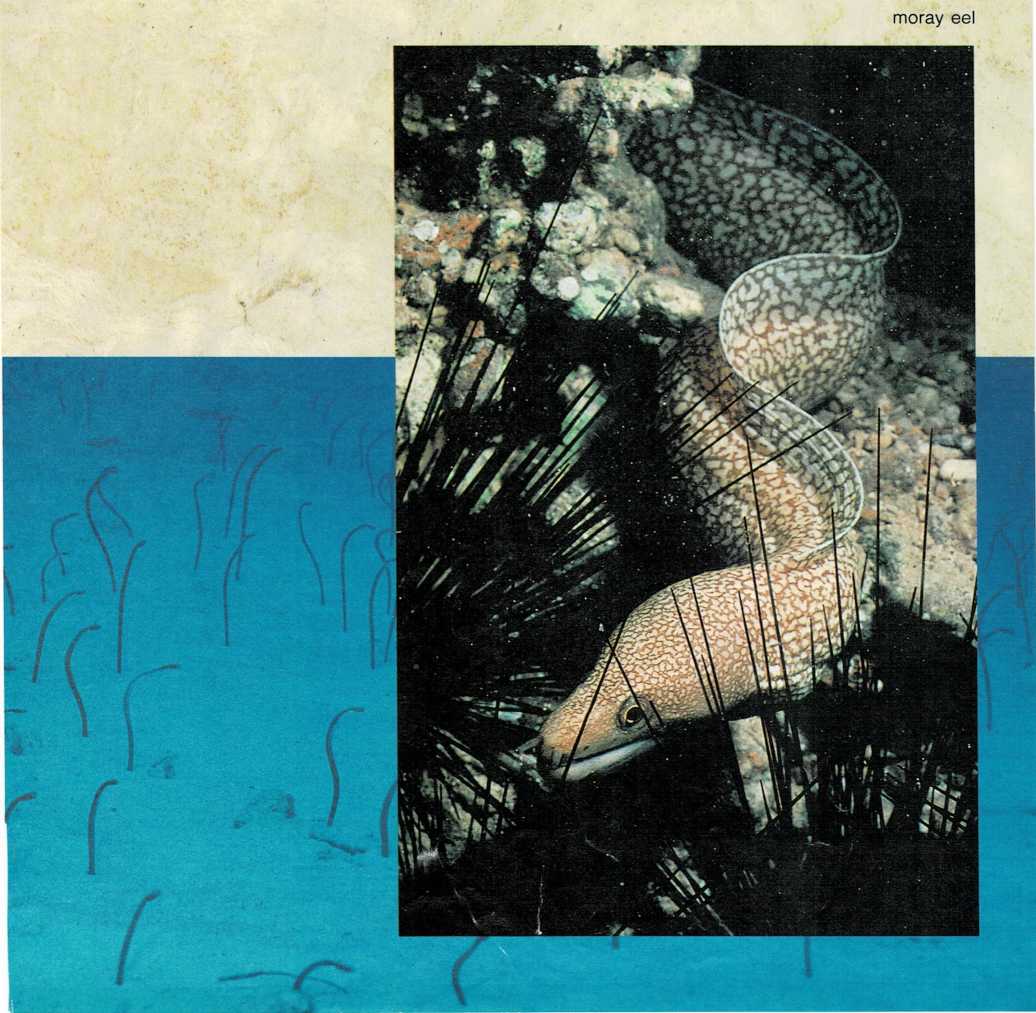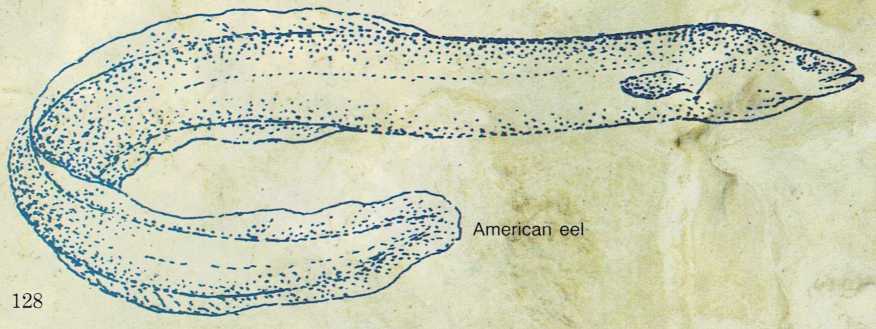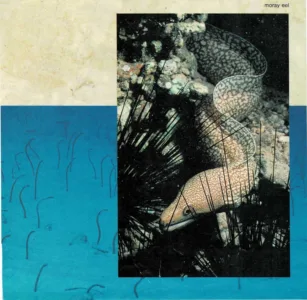Snaky fish
Many people seeing an eel moving in and out among the rocks on the sea
bottom might think it was a snake. The eel does have a long, slithery,
slimy-looking, snaky body. But eels are not snakes. They are true fish,
even though most of them do riot have scales, as most other fish do.
There are many different kinds of eels, but the ones that look and act
most like snakes are those called morays.
Moray eels lie hidden in holes among the rocks during the day. At night,
they come wriggling out to hunt other fish, octopuses, and other sea
animals. Morays are fierce creatures, with rows of fangs in their
mouths. Their bodies are leathery, and often brightly colored. Some
morays are as much as ten feet (3 meters) long.
garden eels

The eels known as garden eels have a very different way of life. These
eels are about twelve to twenty inches (30 to 50 centimeters) long. They
live in tubes they make in the sand. A garden eel spends much of its
time with about two-thirds of its body sticking up out of its tube. The
eel sways back and forth, waiting for one of the small creatures it eats
to come swimming or drifting by.

Garden eels live in large \”communities.” When all of them are sticking
up out of their tubes, they look like a strange garden of snaky plants
growing in the sand. If the eels are frightened, they pull back into
their tubes and vanish from sight.
Most kinds of eels live in the ocean. But even the kinds that live in
the fresh water of rivers and streams begin and end their lives in the
sea. These eels hatch out of eggs their mothers lay in the sea. As tiny
creatures, called larvae [(lahr]{.smallcaps} vuh), they begin to swim
and float toward land. When they reach the mouth of a river, they swim
upstream, farther into the land.
These eels spend from nine to fifteen years living in fresh water. They
grow to a length of from twenty inches (50 cm) to about six feet (1.8
m). Then, one summer, they begin to change. Their bodies get fatter, and
their color changes. In the late summer and fall, the eels head back
toward the sea, to the place where they were hatched years before.
When they reach this place, the males and females mate and eggs are
laid. The adults then die. But the following spring, a new horde of baby
eels starts moving toward the land and the freshwater streams where they
will spend most of their life.


